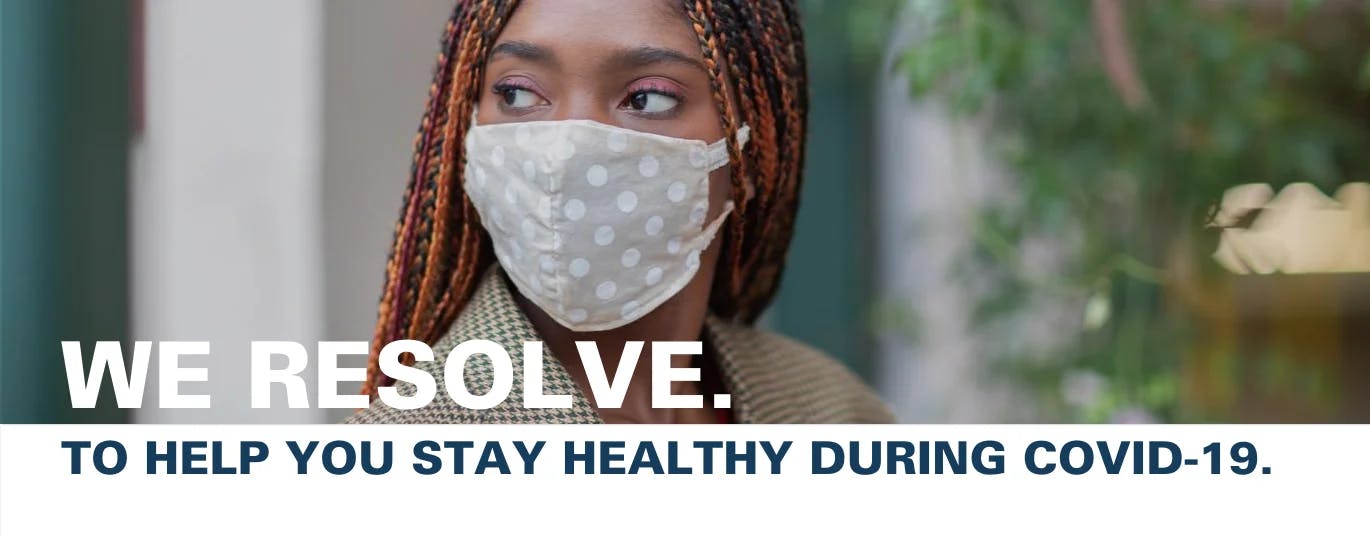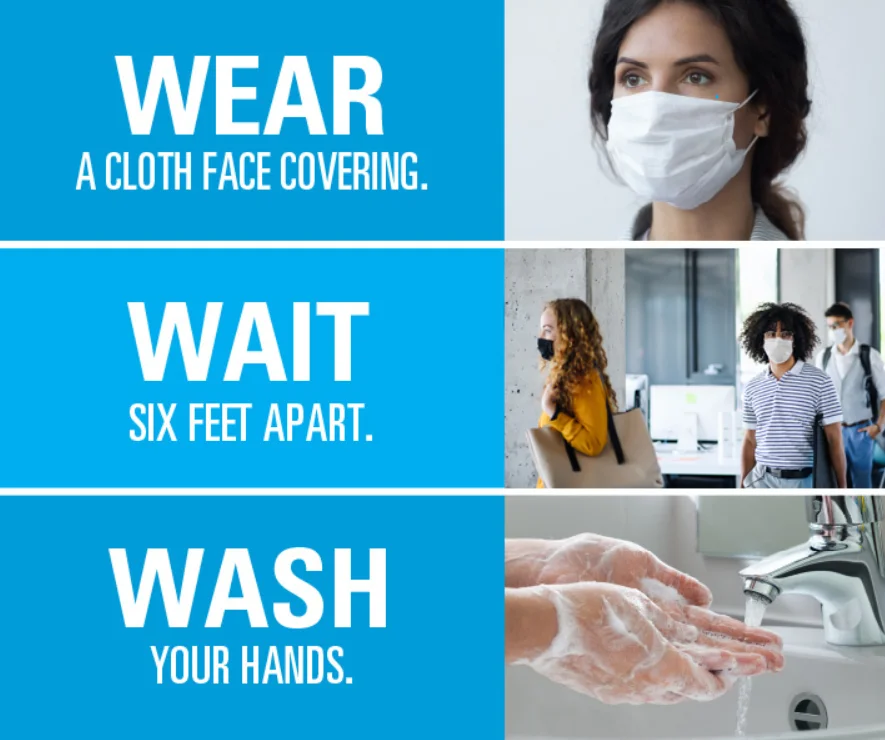
Get the facts on face coverings and social distancing.
Health experts agree that one of the best ways to curb the spread of COVID-19 is to wear a cloth face covering. The Centers for Disease Control and Prevention (CDC) recommends wearing fabric face coverings in public and around people who don’t live in your household. This is particularly important when it’s difficult to keep six feet of distance between yourself and others.
As more health agencies and local governments ask people to wear face coverings, some myths have gained traction. To help you sort through fact and fiction, we’ve debunked some of the most common myths.
MYTH #1: I don’t need to wear a mask if I’m not sick.
False. Not everyone who is infected gets sick or displays symptoms. Recent studies show that many people who test positive for COVID-19 are asymptomatic. Others might display only mild symptoms. People who are asymptomatic may unknowingly pass the virus to others when they cough, sneeze, or talk.
It’s estimated that 40% to 80% of new infections occur from people who don’t show symptoms.[1] Researchers think asymptomatic people can even transmit the virus over a longer period of time.[2]
Because we don’t know for sure who is infected, it’s best for everyone to wear a cloth face covering when in public. This helps us protect one another.

MYTH #2: There’s no point in wearing a cloth mask. There’s no evidence they are effective.
False. The CDC says the general public should wear cloth face coverings, not medical grade masks, when in public.
It’s true that N95 respirator masks are considered the gold standard for medical care. They can block 95% of big and small particles, and they are typically needed in surgical and medical settings.[3]But there is a growing body of evidence, existing, new and emerging, that cloth face coverings can be nearly as effective when worn properly. The CDC has tips about how to properly wear a cloth face covering and how to construct your own.
MYTH #3: If I’m wearing a mask, I don’t need to social distance or stay home.
False. As effective as fabric face coverings are at helping to prevent the spread of COVID-19, they are only one part of the 3 Ws strategy. It’s important to keep in mind all recommended guidelines for keeping you and your family safe. These include frequent hand washing, social distancing when in small groups, and avoiding large gatherings.
MYTH #4: My mask only needs to cover my mouth.
False. A properly worn face covering should cover both your nose and your mouth.COVID-19 is spread from person to person through respiratory droplets. These droplets are exhaled when coughing, sneezing, and talking. They can land in the mouth or the nose of people nearby and are then inhaled into the lungs.
The CDC recommends that your face covering fit snugly but comfortably against the side of the face. Face coverings should cover your nose and mouth. This decreases your risk of catching the virus or unknowingly spreading it.[4]
MYTH #5: Wearing a mask increases your risk for catching COVID-19.
Mostly false. It is true that using an unwashed cloth face covering or improperly handling a used face covering can actually increase your risk of infection. But when worn and handled properly, they have been show to significantly decrease the risk for infection.[5]To avoid increasing your risk of infection, following CDC guidelines for how to wear a face covering. Always wash your hands after you touch your face or face cover, and wash cloth face coverings regularly.
MYTH #6: Wearing a mask is dangerous to your health. It can expose you to harmful carbon dioxide or reduce your oxygen levels.
False. A CDC official explained to Reuters recently that while a small amount of carbon dioxide may collect between the face and the fabric, it is not in dangerous amounts. It is certainly not enough to cause elevated levels of carbon dioxide in the blood.[6] Those with preexisting respiratory conditions such as chronic obstructive pulmonary disease, or COPD, may have difficulty breathing in tight, too close-fitting face coverings. These people should remove their face covers when it becomes difficult to breathe.
Fabric face coverings do not cause low oxygen levels. The American Lung Association notes there is ample evidence for the safety of wearing these coverings for extended periods of time. In our nation’s hospitals and surgical settings, nurses and doctors often wear masks for an entire workday.
Wearing a cloth face covering is certainly new for many North Carolinians. It may feel strange or uncomfortable at first. But it is critical to helping prevent the spread of COVID-19. The American Lung Association even has a set of tips to help you get used to wearing one.
Wearing face coverings is one only part of a larger strategy. When combined with regular hand washing and social distancing, masks can significantly decrease your risk of catching or spreading the virus.
For more information about COVID-19, please visit our Resource and Information center: bluecrossnc.com/coronavirus.
——————–Interested in learning more about health insurance? Get a free online quote or contact the Health Plans of NC Independent Agent on this page.
